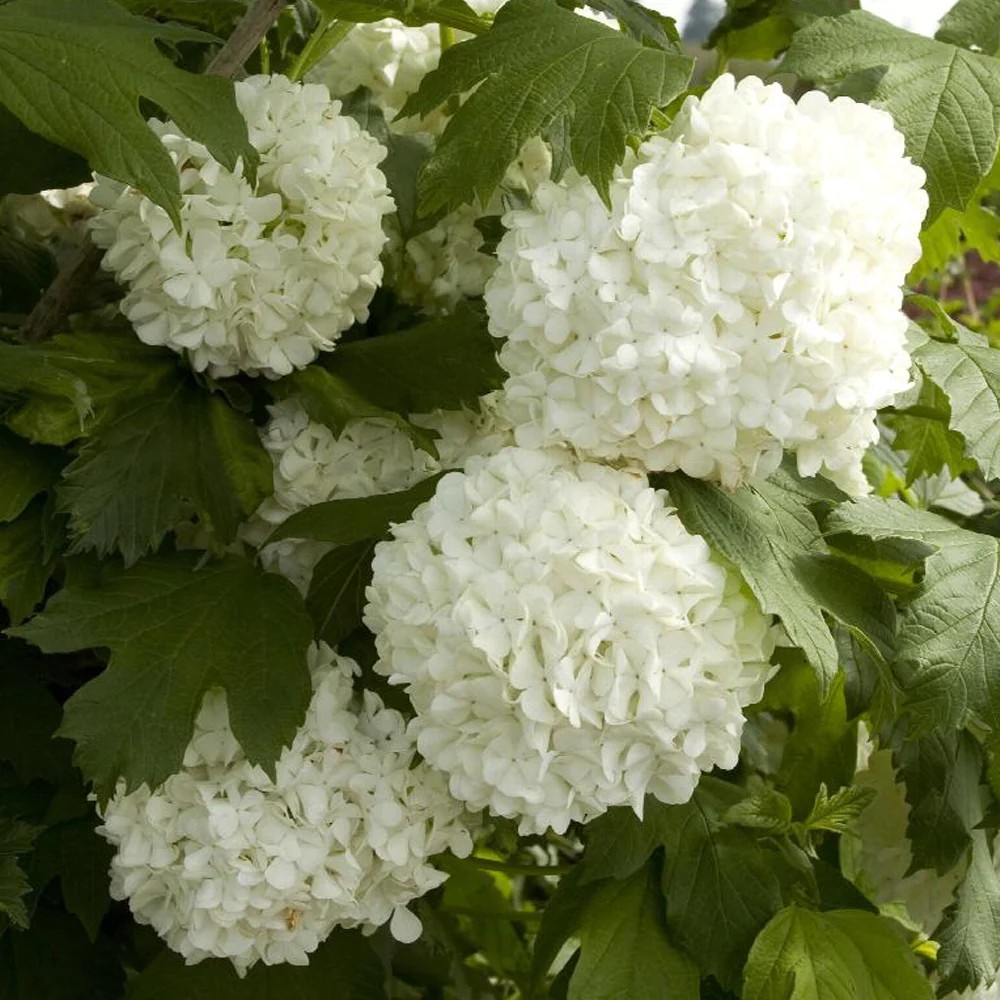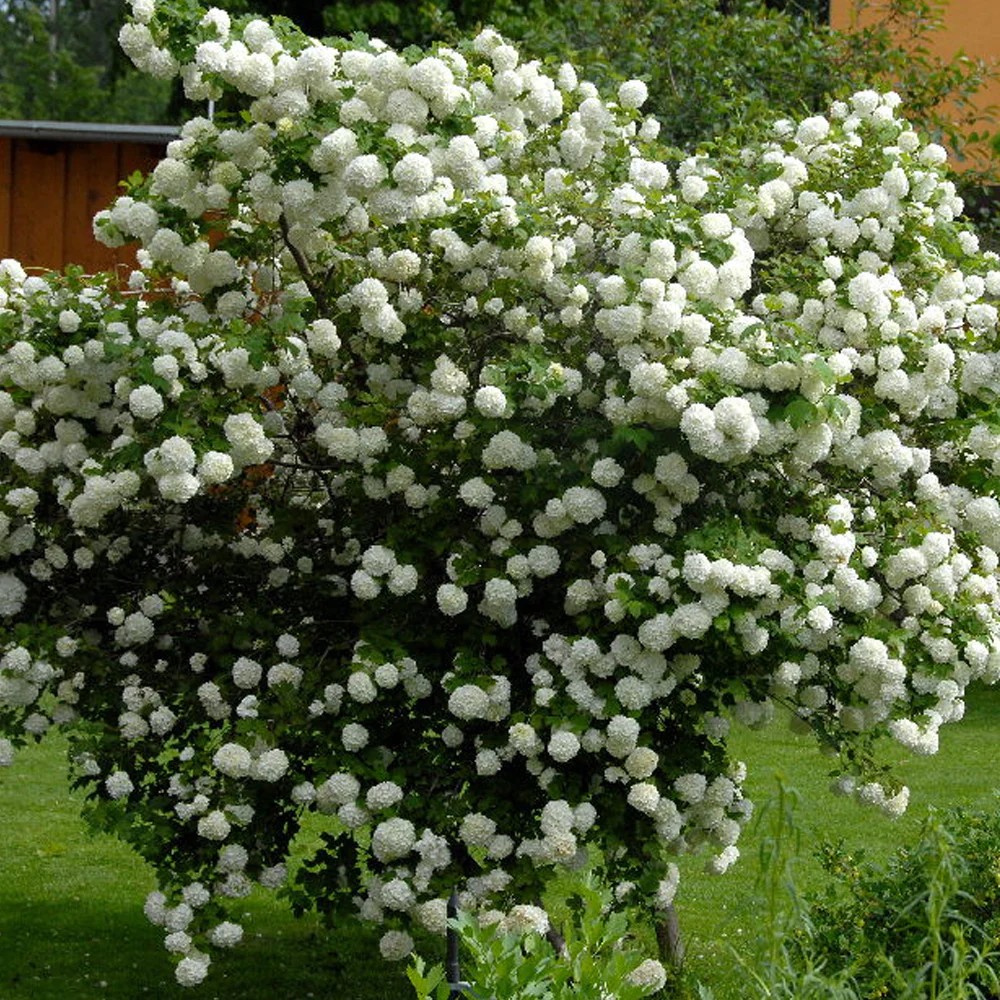The highbush cranberry Viburnum opulus, sometimes known as the "European cranberry bush," is indigenous to Europe, Asia, and North Africa. It is a deciduous shrub that normally reaches a height of 10 to 15 feet and has a rounded spreading habit. It has flat-topped, 3" wide cymes of white flowers that resemble lacecaps in the spring, drooping clusters of cranberry-like red berries (drupes) in the fall, and three lobed, maple-like, dark green leaves. Although the berries (drupes) are theoretically edible, due to their intense bitterness, it is not advised to eat them straight from the shrub. After a frost, fruits often shrink. In the fall, the foliage turns a sometimes-attractive reddish red.
| Plant Type |
Shrubs |
| Hardiness Zone |
3-8 |
| Exposure |
Full Sun, Partial Sun |
| Season of Interest |
Late Spring, Summer, Fall, Winter |
| Height | 8' - 10' (ft), 10' - 15' (ft) |
| Spread | 10' - 15' (ft) |
| Spacing |
144 in |
| Water Needs |
Average |
| Maintenance |
Low |
| Soil Type |
Chalk, Clay, Loam, Sand |
| Soil PH |
Acid, Alkaline, Neutral |
| Soil Drainage |
Moist but Well-Drained, Well-Drained |
| Characteristics |
Award Winning, Plant of Merit, Showy |
| Tolerance |
Deer |
| Attracts |
Bees, Butterflies |
| Garden Uses |
Beds and Borders, Cut Flowers, Hedges and Screens, Specimen |
Viburnum opulus 'Roseum' (European Cranberrybush) | European Cranberrybush 'Roseum', Guelder Rose 'Roseum', Viburnum opulus 'Sterile', Water Elder 'Roseum', Cramp Bark 'Roseum', Snowball Tree 'Roseum', European Cranberry Bush 'Roseum', European Cranberry Tree 'Roseum', Marsh Alder 'Roseum', Ople Tree 'Roseum', Red Elder 'Roseum', Rose Elder 'Roseum' || The highbush cranberry Viburnum opulus, sometimes known as the "European cranberry bush," is indigenous to Europe, Asia, and North Africa. It is a deciduous shrub that normally reaches a height of 10 to 15 feet and has a rounded spreading habit. It has flat-topped, 3" wide cymes of white flowers that resemble lacecaps in the spring, drooping clusters of cranberry-like red berries (drupes) in the fall, and three lobed, maple-like, dark green leaves. Although the berries (drupes) are theoretically edible, due to their intense bitterness, it is not advised to eat them straight from the shrub. After a frost, fruits often shrink. In the fall, the foliage turns a sometimes-attractive reddish red.
Full Sun, Partial Sun,
Late Spring, Summer, Fall, Winter,
Average Water Needs, Low Maintenance, Moist but Well-Drained, Well-Drained,
Award Winning, Plant of Merit, Showy,
Deer Tolerant,
Attracts Bees, Attracts Butterflies, Beds and Borders, Cut Flowers, Hedges and Screens, Specimen



